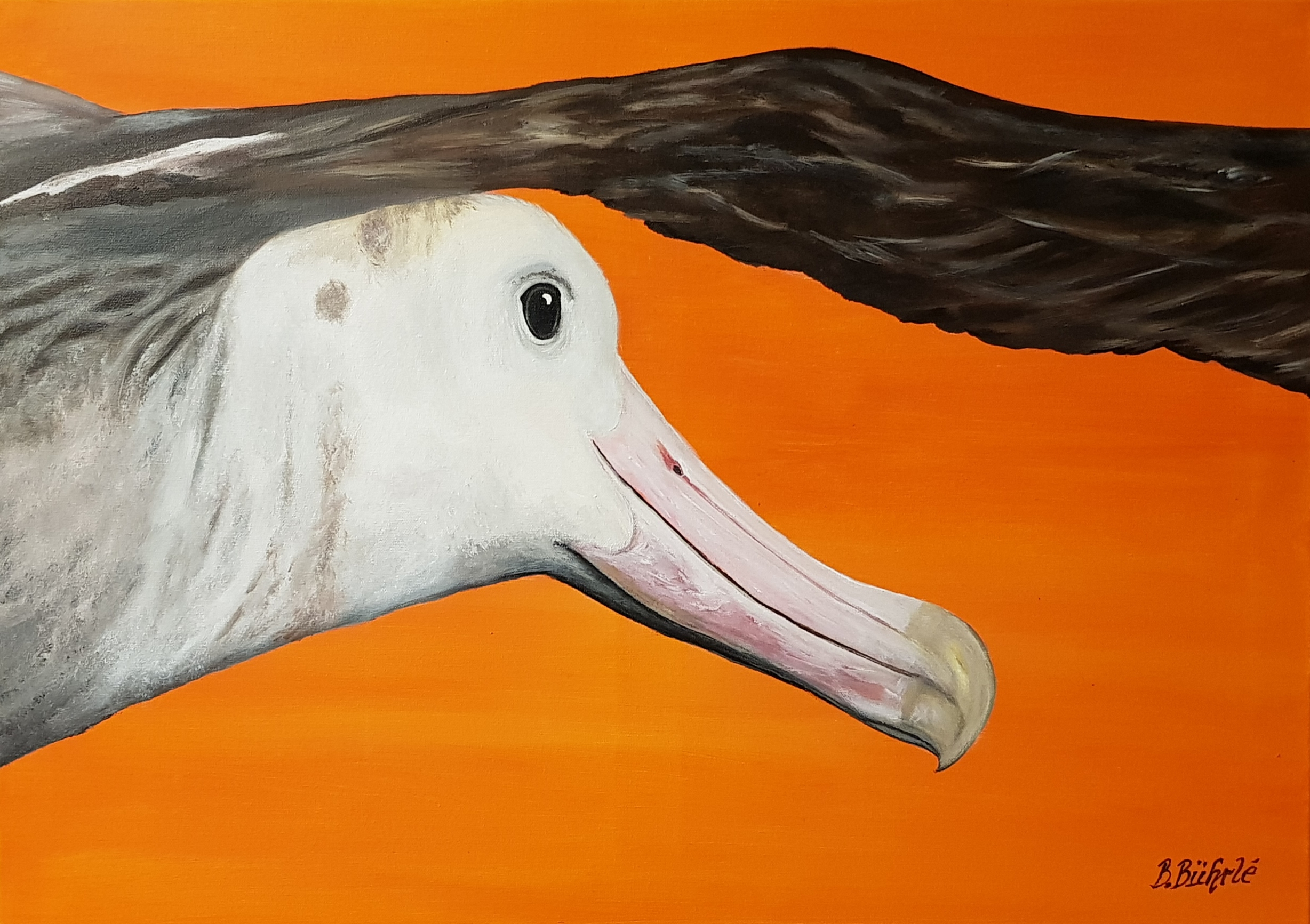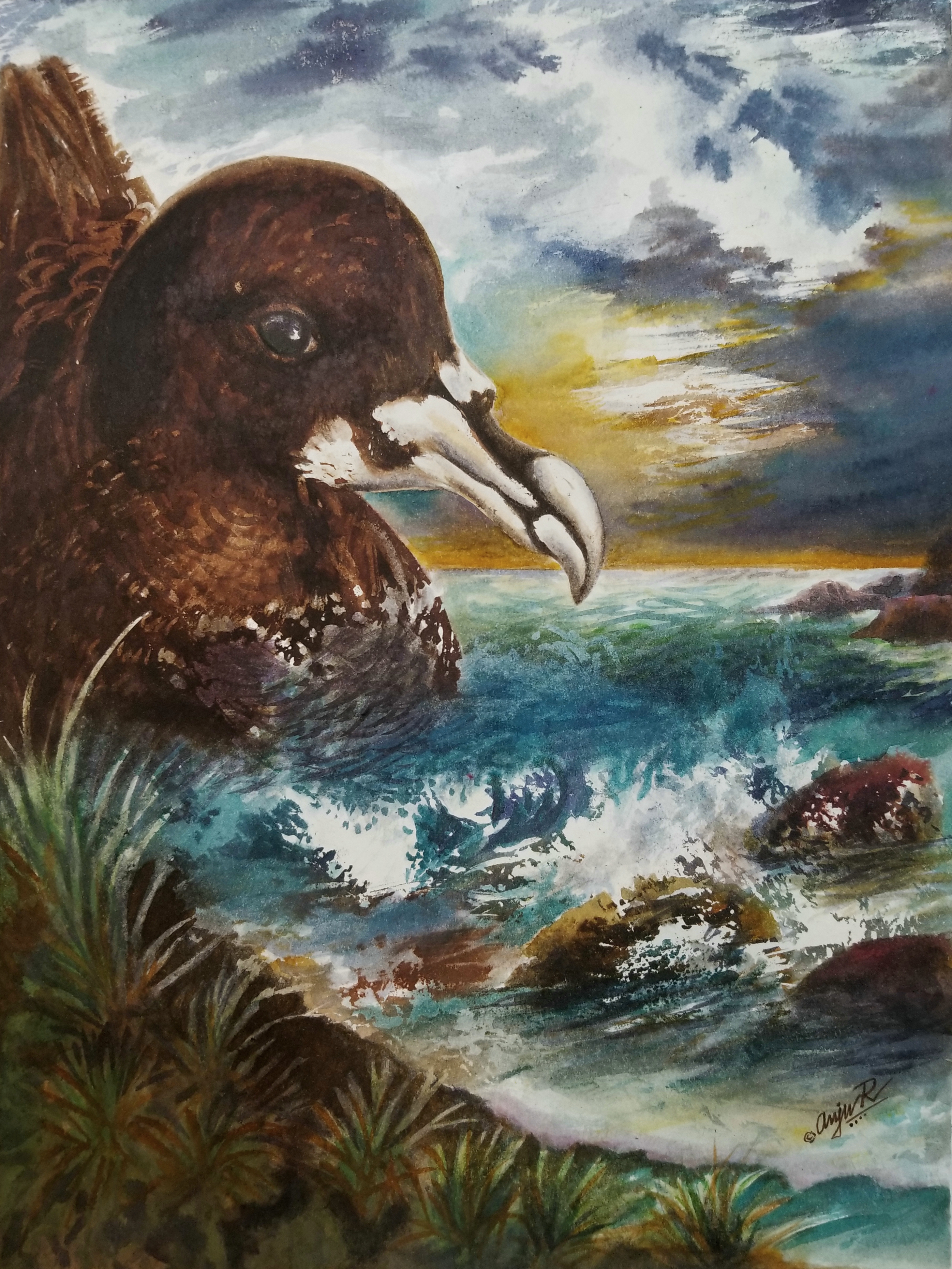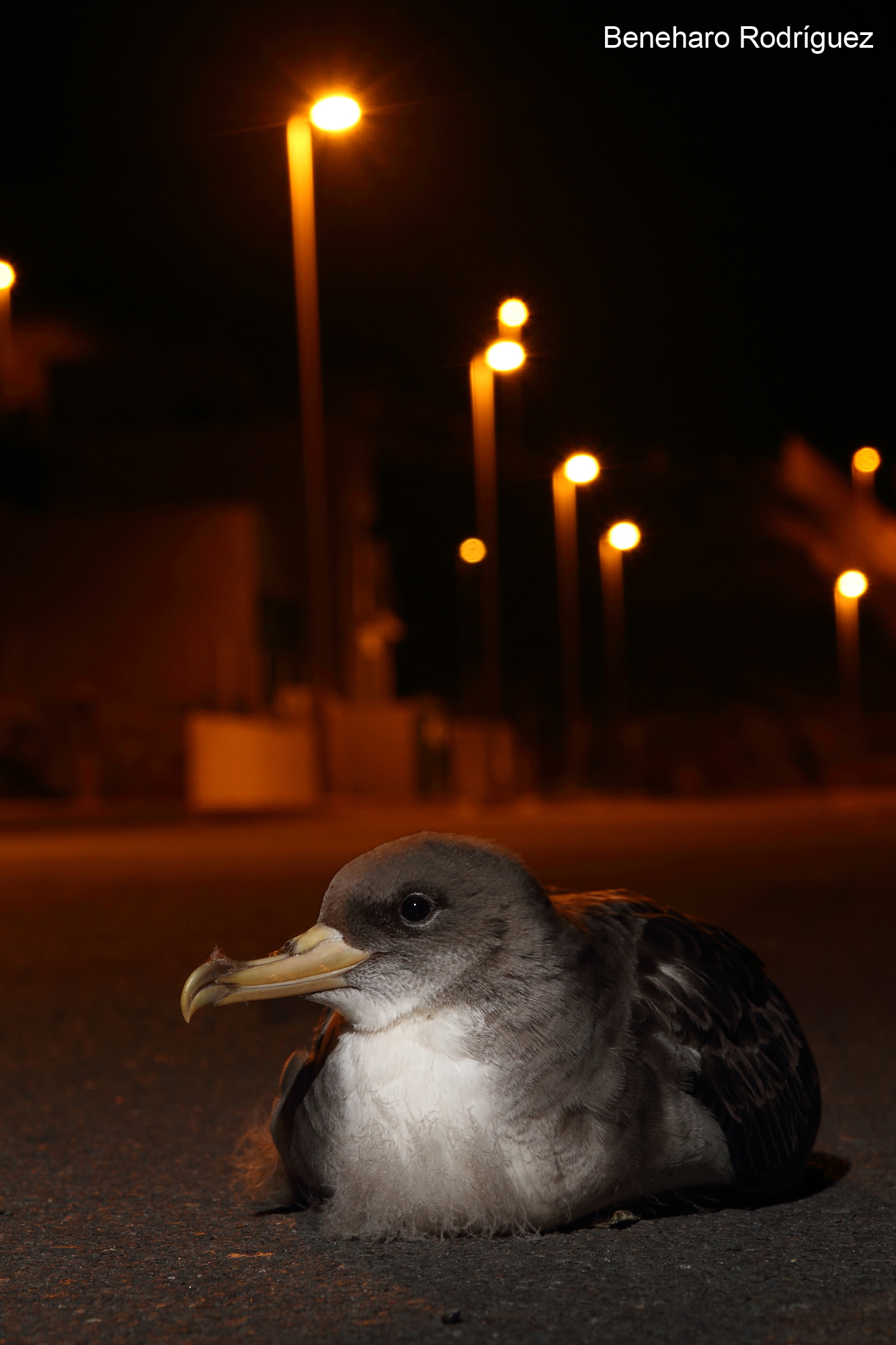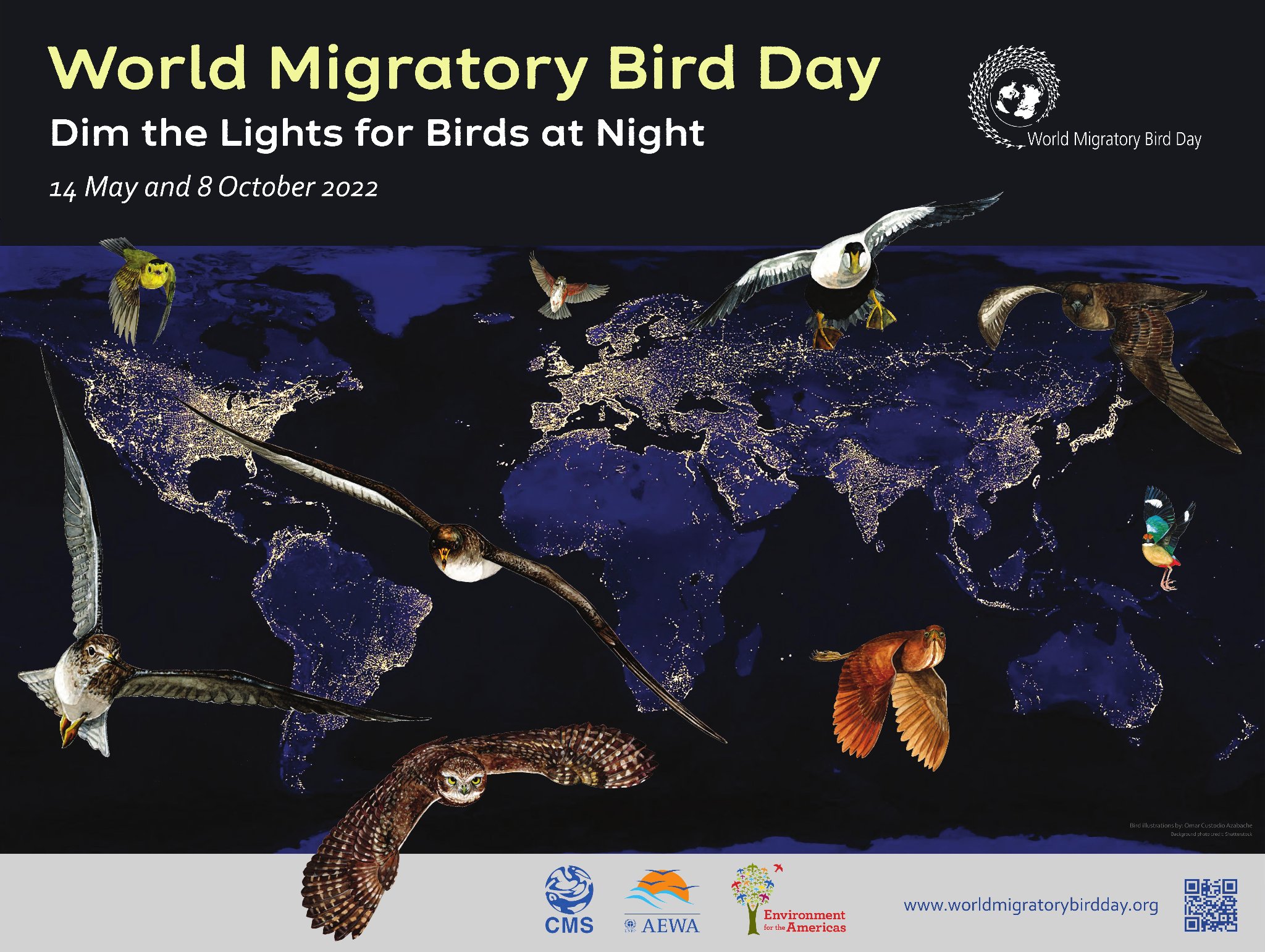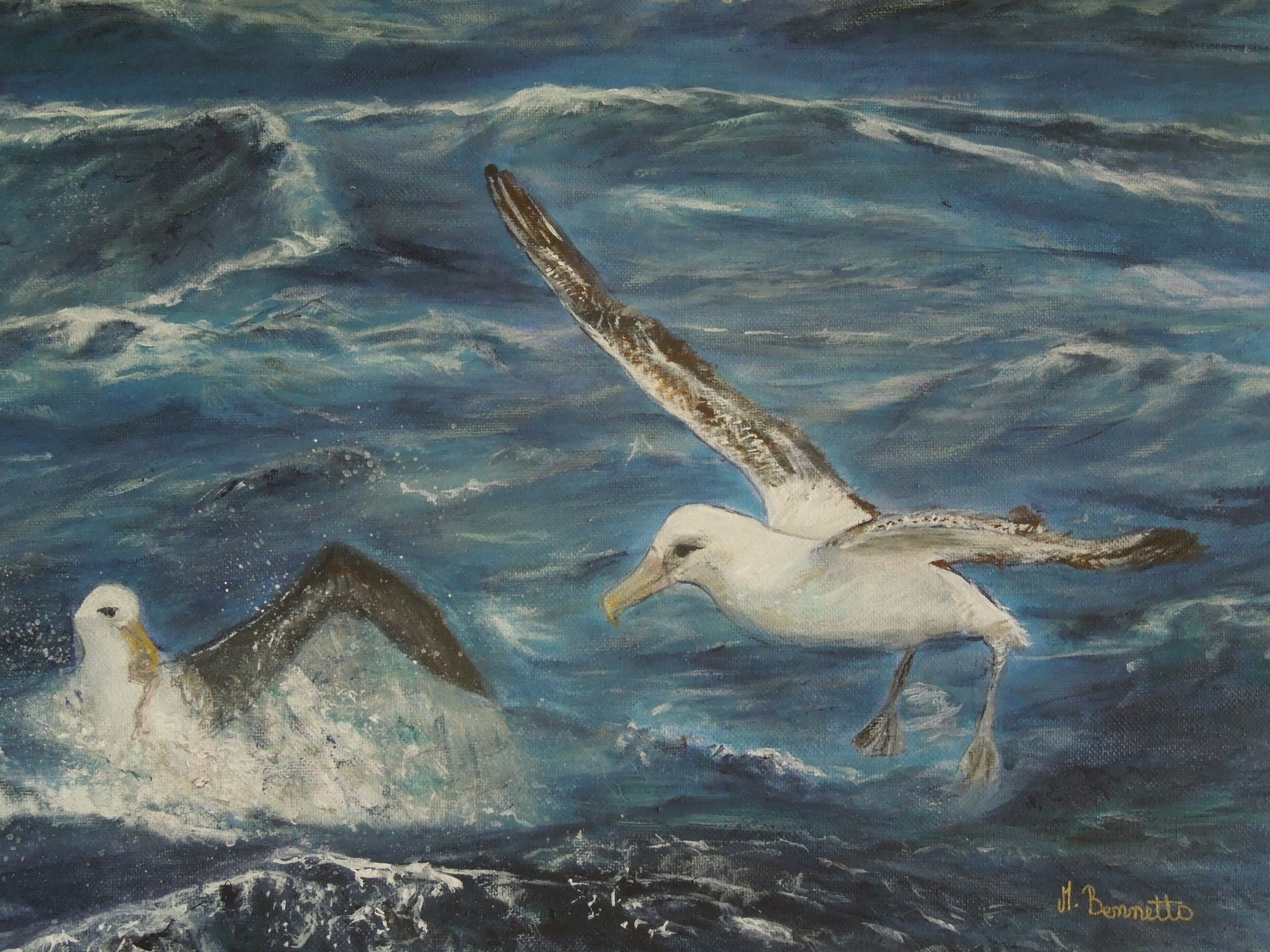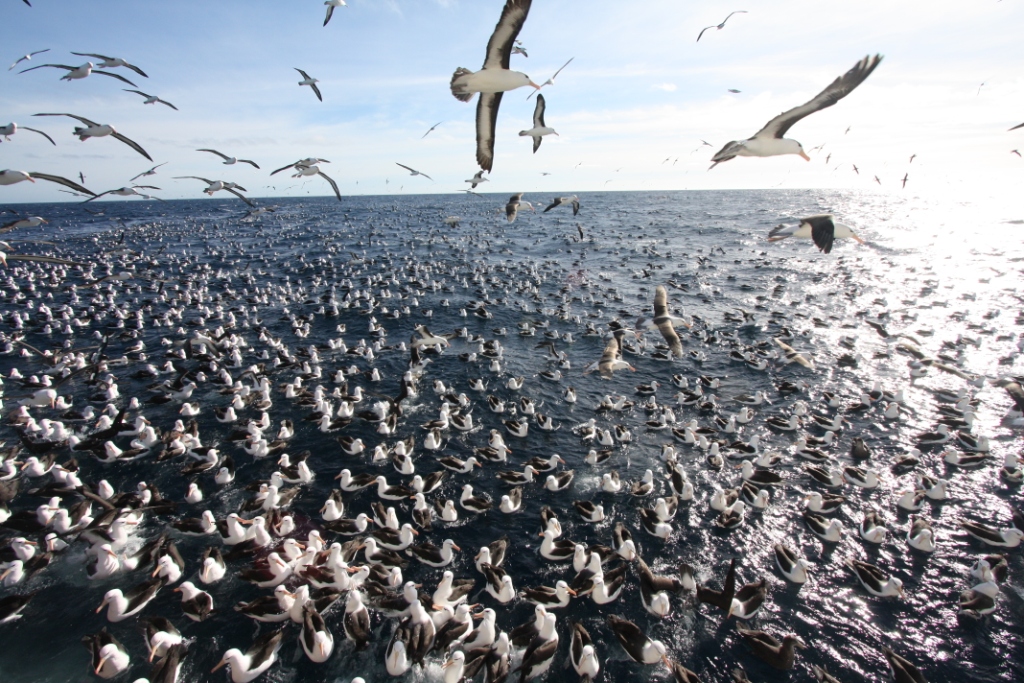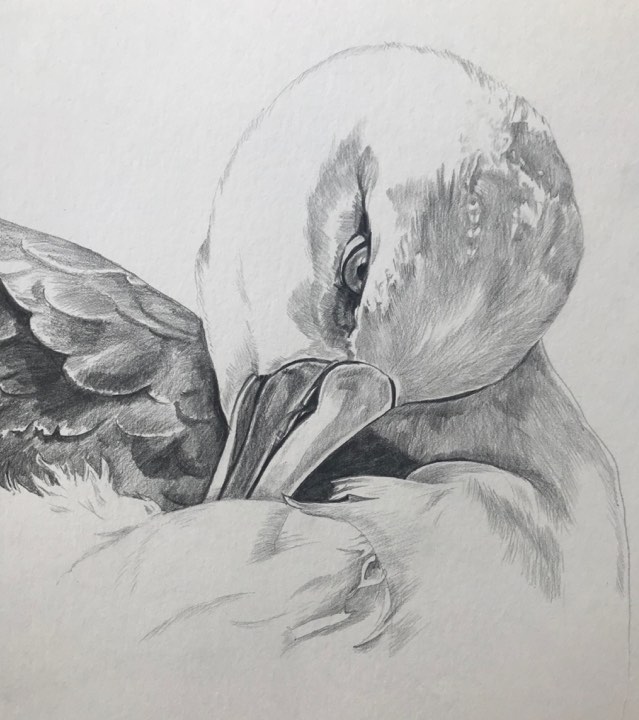
Buller's Albatross by ABUN artist Virginia Nicol; after a photograph by Laurie Smaglick Johnson
The Conservation Services Programme (CSP) of New Zealand’s Department of Conservation works to reduce the impact of commercial fishing on protected species in New Zealand fisheries waters. Here is one of its most recent reports by David Thompson (National Institute of Water & Atmospheric Research, Wellington, New Zealand) and Paul Sagar.
The report’s Executive Summary follows:
“This report presents a summary of the results of demographic studies at three study colonies of southern Buller’s albatrosses Thalassarche bulleri bulleri breeding at The Snares from 27 March to 13 April 2022.
Demographic studies at the three study colonies on North East Island have been undertaken annually from 1992 to 2022, with the exception of 2018 and 2021, and so this report incorporates some of these data in the current analysis. Estimates of the numbers of breeding pairs, made by recording the contents (chick, egg or egg fragments) of each nest mound, increased in two of the three colonies to over the numbers recorded during 2020 to be at all-time highs for the 30-year duration of the study.
With the assumption that the combined total number of breeding pairs in the three study colonies was representative of North East Island as a whole, and notwithstanding the maximal counts in two of the study colonies recorded in 2022, then the breeding population probably peaked around 2005-2006 and has since undergone marked annual variations.
A total of 379 birds were [sic] recaptured that had been banded previously in the study colonies as breeding adults of unknown age. A further 137 breeding birds were banded in the study colonies - these are presumed to be first-time breeders – during the latest 2022 survey. Estimates of annual survival of birds banded as breeders continued to decline, with estimates close to 0.9, or lower, in recent years. During the period 1992-2004 all chicks that survived to near-fledging in the study colonies were banded and their survival to return to the study colonies in subsequent years has been monitored. In 2022, 139 of these birds were recaptured, with birds from cohorts banded from 1996 to 2004 being recaptured for the first time. This demonstrates the long-term monitoring required to obtain reliable estimates of survival of such known-age birds. Of these recaptured 139 known-age birds, 11 were found breeding for the first time, and so were recorded as being recruited to the breeding population. In addition, three birds that had been banded as near-fledging in the study colonies during September 2013 and September 2014 were also recaptured for the first time.
In 2020 50 Global Location Sensing (GLS) tags were attached to the metal leg bands of breeding birds in the Mollymawk Bay study colony; of these, 31 were retrieved, and a further 7 recorded as being lost, during the 2022 field season.
Twelve trail cameras were deployed at breeding colonies during the 2022 fieldwork: 11 set to record one photograph every hour during daylight, and one set to record 30 seconds of moving images daily, until they are retrieved in April 2023.”
Reference:
Thomson, D. & Sagar, P. 2022. Population studies of southern Buller's albatross on The Snares. Prepared for Conservation Services Programme, Department of Conservation: CSP Project 2019-04. Wellington: National Institute of Water & Atmospheric Research Ltd. 19 pp.
John Cooper, ACAP Information Officer, 17 May 2022

 English
English  Français
Français  Español
Español 